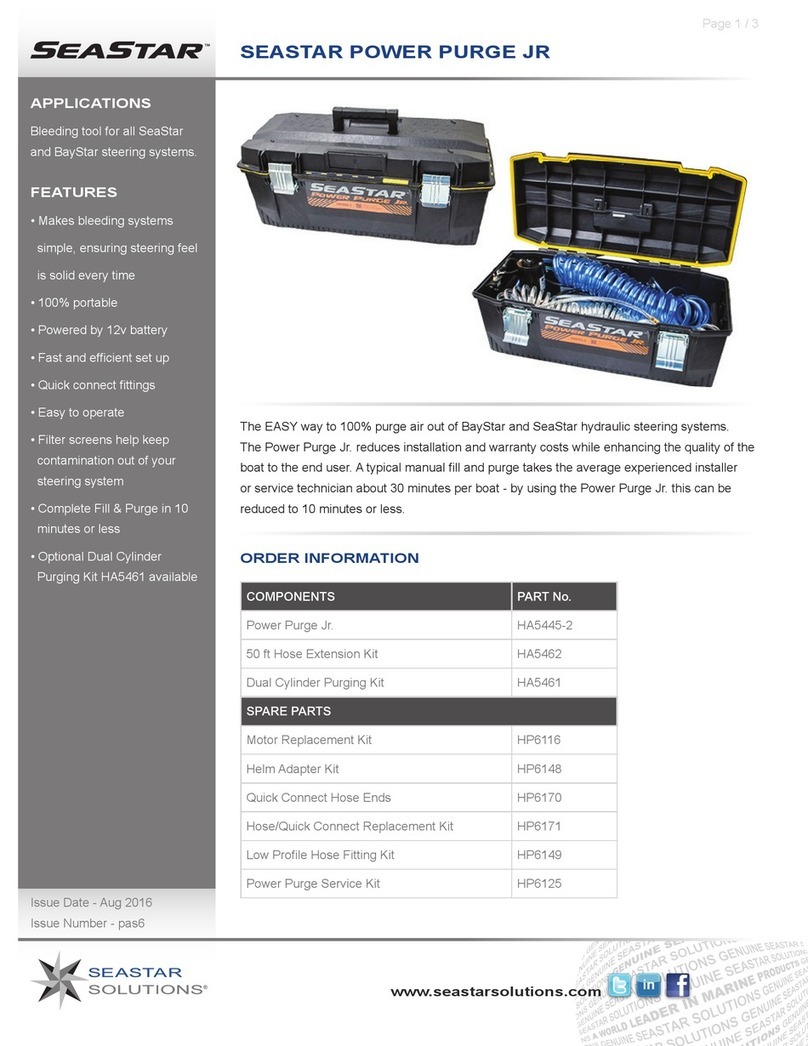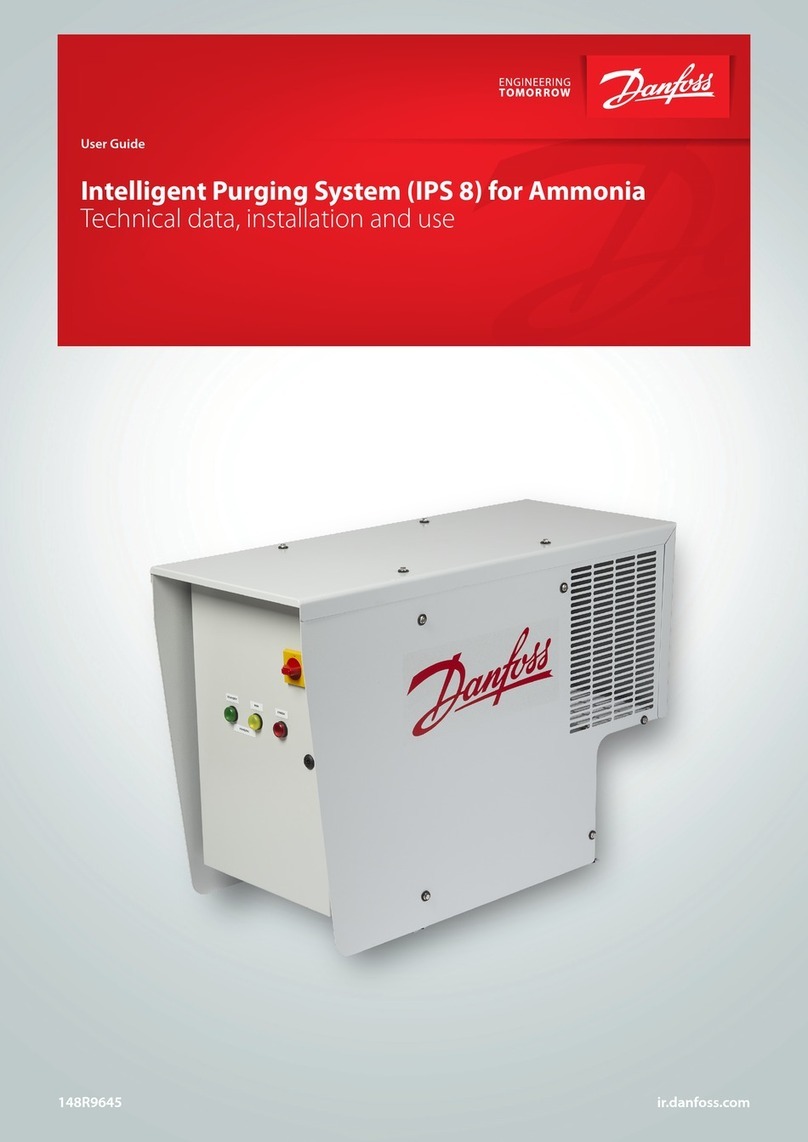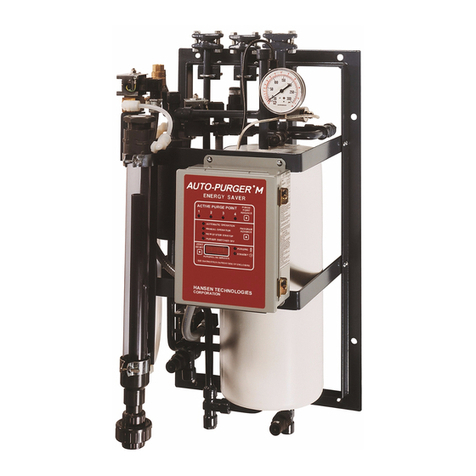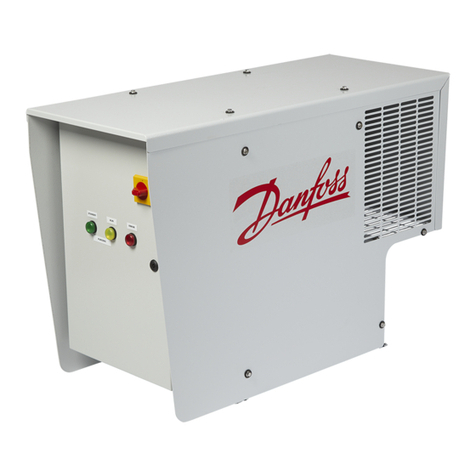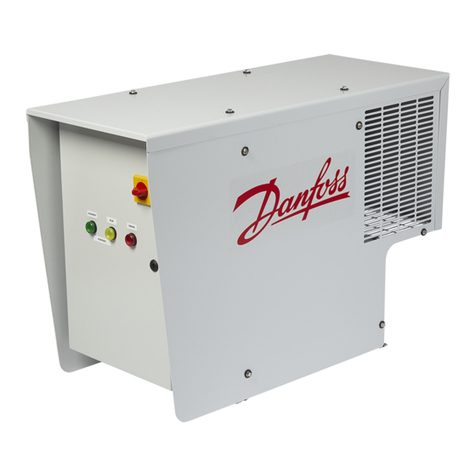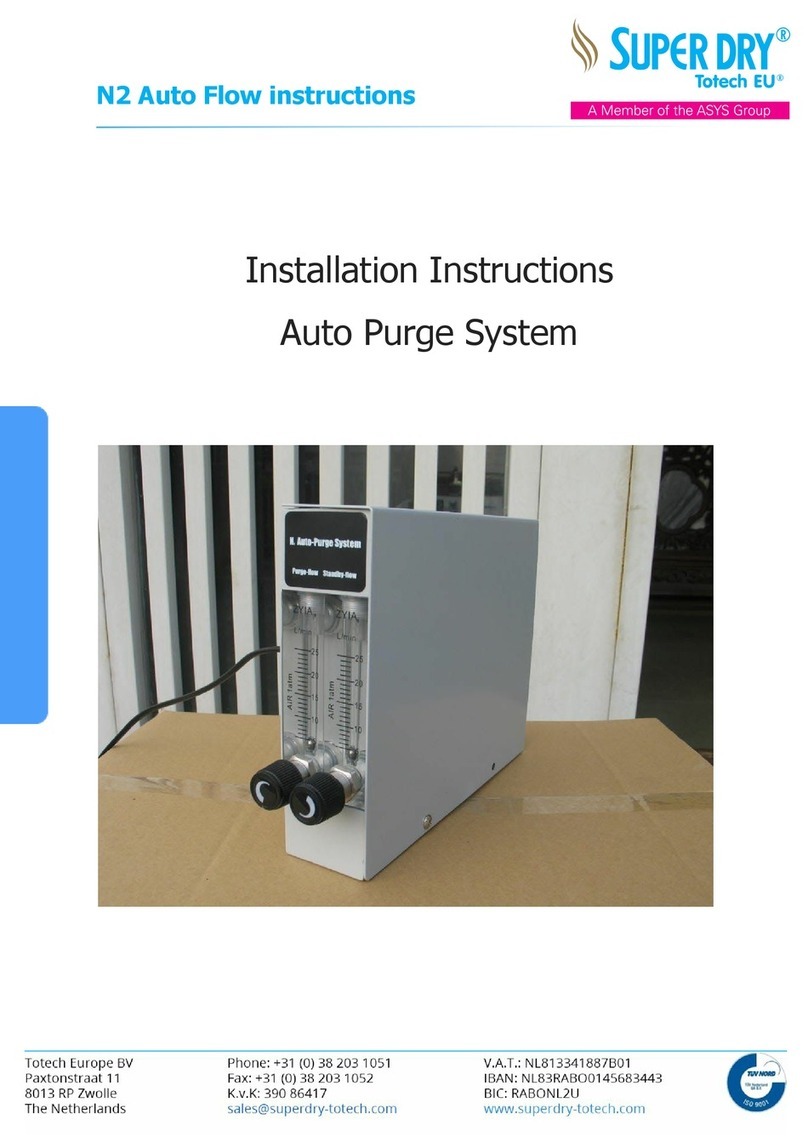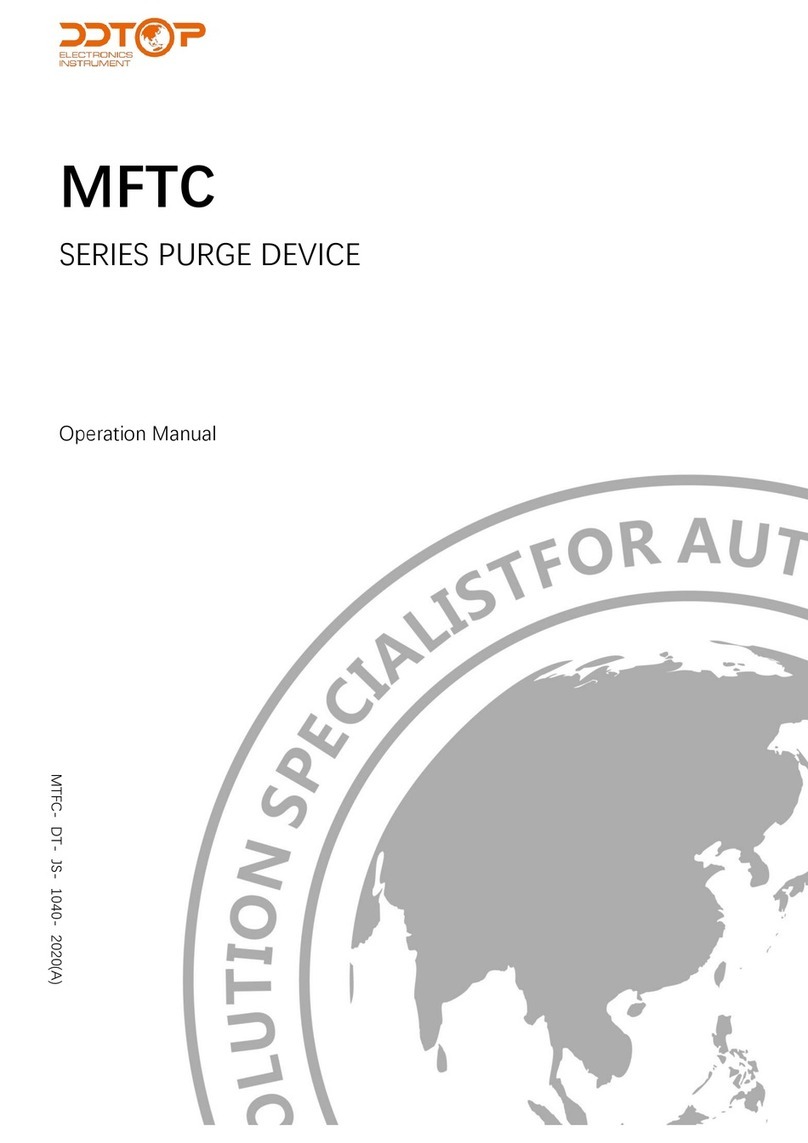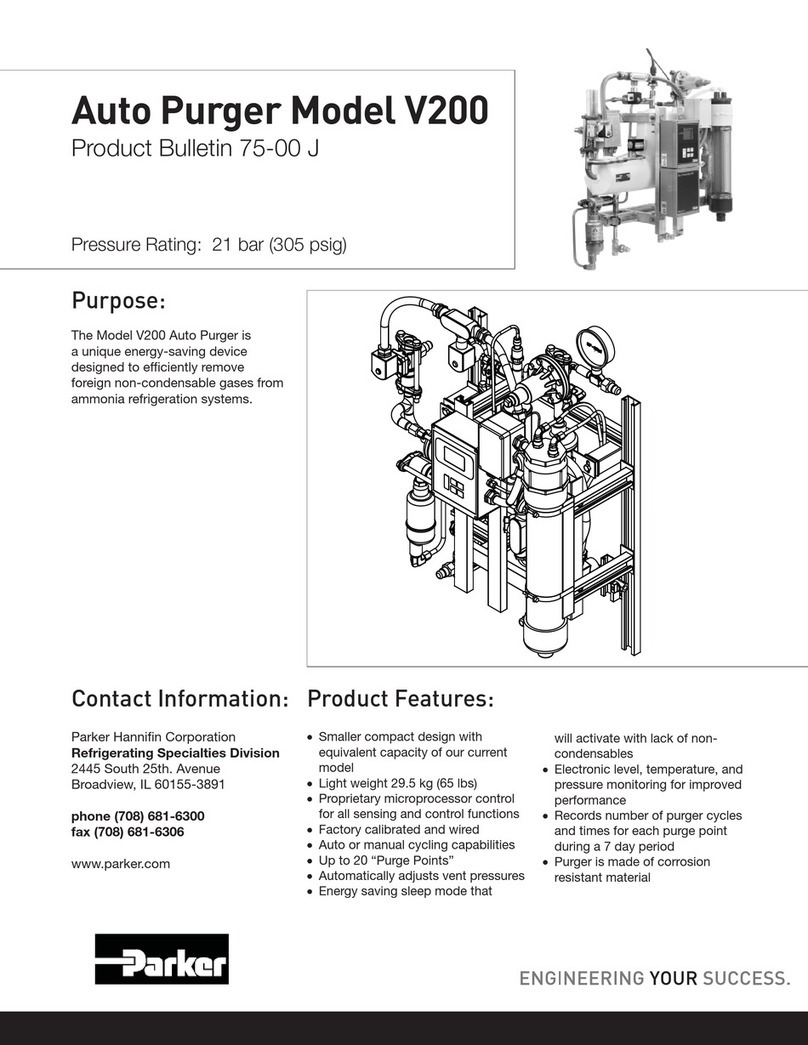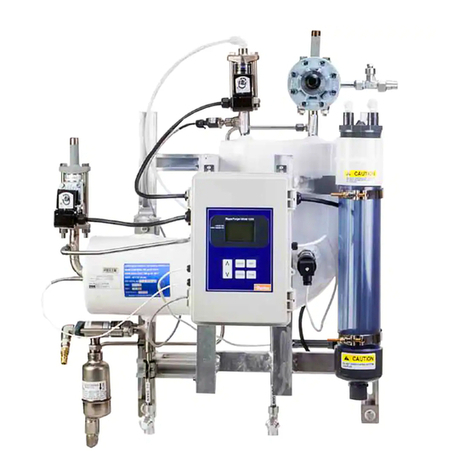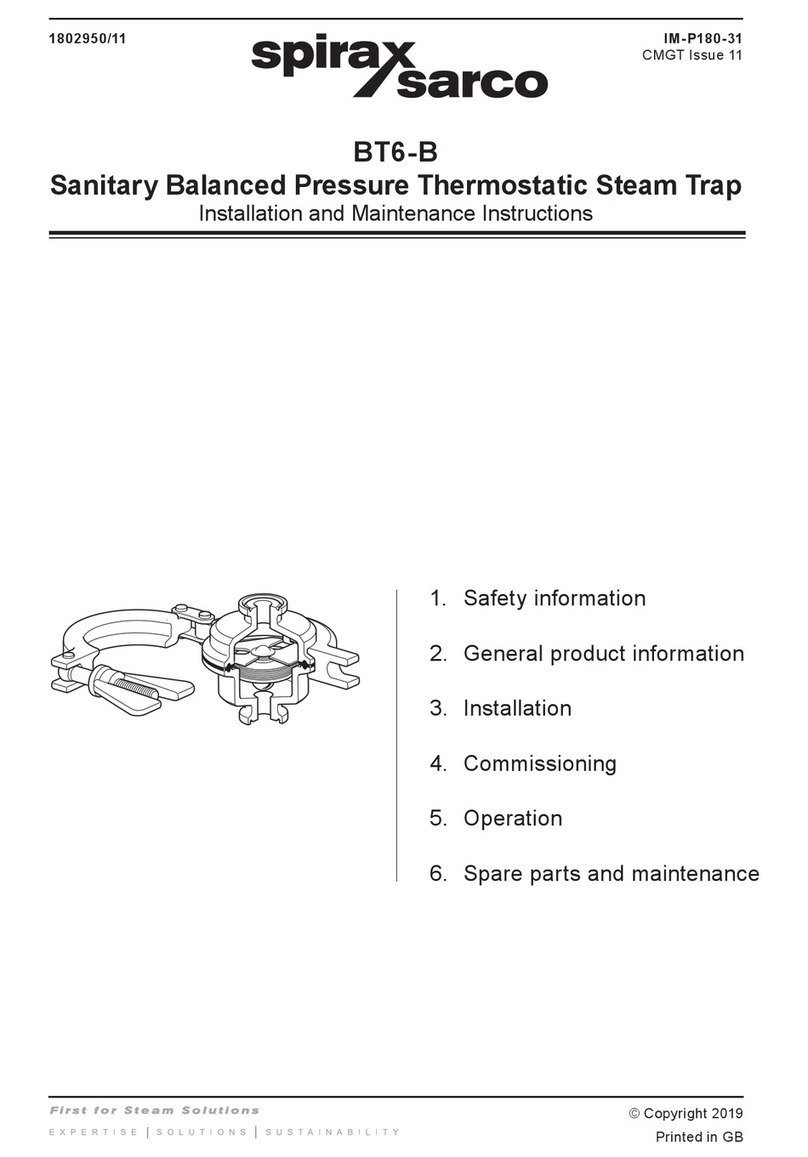
6
APP-001b
APR 2007
the liquid level gradually falls, causing the float ball to
fall. This changes the SPDT switch position of the liquid
level float switch and energizes the purge gas solenoid
valve (C) and the water bubbler fill line solenoid valve (D),
allowing noncondensible gas to bleed through the orifice
plate into the water bubbler. As air is released into the
water bubbler, the liquid refrigerant level in the purger
float ball chamber rises.
The control software operates each specified remote
purge point solenoid valve in sequence.
The make-up liquid from the low-pressure pumped
liquid line typically contains a small percentage of water
dissolved in the liquid ammonia. This is the water the
AUTO-PURGER Plus will remove from the refrigeration
system. Liquid ammonia and water are brought into the
evaporator chamber of the purger, but only ammonia
vapor can exit through the suction line. Gradually
the concentration of water in the evaporator chamber
increases with time. When the concentration of water in
the evaporator chamber reaches about 25% water / 75%
ammonia, as detected by the water concentration sensor,
the AUTO-PURGER Plus switches to the CONCENTRATING
WATER mode. The purger stops collecting air, isolates
the mixture of water and ammonia, and energizes the two
electric heaters. About half the energy to concentrate
the water comes from the two electric heaters, and the
other half comes from the foul gas that continues to flow
through the purger. The heaters remain energized until the
ammonia water solution is heated to 185°F (85°C), except
for suction pressures in a vacuum. This corresponds to a
concentration of about 10% to 20% ammonia and about
80% to 90% water. In a vacuum, water boils at lower
temperatures, so the set point to which the ammonia
water solution is heated is reduced to an appropriately
lower temperature depending on the suction pressure as
detected by the low side pressure transducer.
The AUTO-PURGER Plus will prepare the concentrated
water for draining, but the computer software will not
allow draining until an operator presses a button to permit
draining. The suction line solenoid valve (E) shuts. The
Control Console indicates READY TO DRAIN. OPEN WATER
PURGE SHUT-OFF VALVE THEN PRESS “OK” BUTTON.
The system remains in this condition until an operator
opens the water purge line shut-off valve and presses the
OK button on the Control Console. See Figure 5.
SECTION 3 AUTO-PURGER PLUS OPERATION
The AUTO-PURGER Plus is designed to automatically start-
up and operate without the assistance of plant personnel.
Beginning at start-up, the following is a description of
the refrigerant flow through a purger when all connecting
shut-off valves are open. See Figure 4.
START-UP
Make sure all piping, electrical connections, and settings
are complete as described in this bulletin. Open the foul
gas, low-pressure pumped-liquid, low-pressure liquid
return, and suction line shut-off valves. Open the purge
gas valve. The water purge line shut-off valve should
remain closed at this time (open only while draining
water). On start-up, the AUTO-PURGER Plus enters a
COOLING DOWN stage. (The display indicates 3333.) In
this stage, liquid refrigerant fills and cools the purger.
The low-pressure pumped-liquid line solenoid valve (B)
energizes to feed refrigerant to the low-pressure flooded
evaporator. The liquid make-up level sensor, located in the
evaporator chamber, senses when the flooded evaporator
is full and closes the low-pressure pumped-liquid line
solenoid valve (B).
At the same time the flooded evaporator is cooling, the
control software energizes the first purge point solenoid
valve. Foul gas enters the high-pressure air separator
chamber and condenses to fill the high-pressure air
separator chamber with liquid. When the float switch
chamber fills with liquid refrigerant, the float ball rises
and pulls in the float switch magnet.
At approximately 20°F (–7°C) evaporator temperature,
the evaporator shell temperature sensor switches the
purger from the COOLING DOWN stage to STARTUP
DELAY MODE for 10 minutes, as indicated by the Control
Console no longer displaying 3333. The control software
will not allow any noncondensibles into the water bubbler
until 10 minutes after the Control Console discontinues
indicating 3333.
OPERATION
When the purger is in COLLECTING AIR AND WATER mode,
a mixture of noncondensible gas and refrigerant flows
into the purger. The evaporator shell temperature sensor
also allows solenoid valves (C) and (D) to open when the
float ball is down (magnet away from tube).
The foul gas may carry a certain amount of condensed
refrigerant, which is captured by the liquid drainer before
it enters the purger’s condenser coil. From the liquid
drainer, the liquid is fed directly into the low-pressure
liquid return line. If this separation does not occur, liquid
refrigerant will fill the purger’s condenser and limit the
condensing capacity of the purger.
The liquid-free foul gas enters the purger condensing
coil, which is submerged in the flooded evaporator. The
refrigerant condenses inside the coil. The condensed
refrigerant and noncondensible gas then flow through a
check valve and back into the air separator chamber. The
condensed liquid refrigerant is removed from the high-
pressure air separator chamber through the liquid metering
valve and to the low-pressure liquid return line.
Meanwhile, the noncondensible gas travels along the top of
the air separator chamber and into the float ball chamber
where it collects. As more noncondensible gases collect,


